Caucasian Shepherd Vs German Shepherd: Loyal, Loving and Very Much Alike!
Nearly everyone on the planet knows of the German Shepherd dog.
These dogs have been famous since the era of silent films when a German Shepherd dog named Rin Tin Tin lit up the silver screen and stole the show from his human co-stars.
The Caucasian Shepherd is a rarer breed and much less well known.
Called the “Ovcharka” in their native Russia, the Caucasian Shepherd has been known to face down bears and wolves to defend livestock.
They are as mighty a canine as they come.
In this article, we take a side by side look at the Caucasian Shepherd vs the German Shepherd. Both can make great companion canines.
But which dog breed will best suit you? Let’s find out!
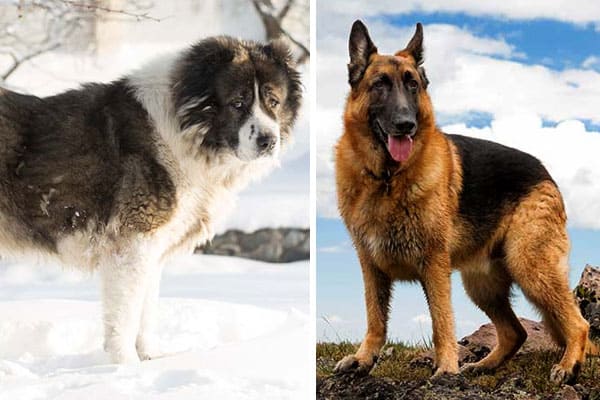
Meet the Caucasian Shepherd: Mighty Max
Maximus, a Caucasian Shepherd dog living with his owner in the United Kingdom, has become somewhat of a local celebrity since his appearance on the UK’s popular show Animal Watch went viral and garnered more than six million views.
Max is quite simply enormous. If you have never seen a Caucasian Shepherd before now, Max provides a great introduction to this video.
Meet the German Shepherd: Finn
Finn, a purebred German Shepherd from the working K-9 breed line, has garnered more than half a million views on YouTube after his guest appearance on the UK’s popular Animal Watch television show.
Finn is fearless, fast, and ferocious when he feels that his human carer is being threatened, as you can see in this video.
Caucasian Shepherd Vs German Shepherd: Dog Breed History
Caucasian Shepherd dog breed history
As a member of the American Kennel Club’s (AKC) foundation stock breed category, less is known about this dog’s popularity with owners in the United States.
In their native Russia, Caucasian Shepherds are called Caucasian Ovcharka dogs. These are true working dogs.
The Ovcharka dog breed was developed to guard, herd, and defend livestock herds and flocks against the very fiercest of wild predators – wolves and bears. They have also historically been used to guard people.
The dog breed takes its formal name from the Caucasus mountain range which runs throughout Eastern Europe.
Breeders focused on developing an all-around mighty dog breed with keen eyesight and hearing, great physical power, athleticism, intelligence, and intense drive and dedication.
German Shepherd dog breed history
The German Shepherd dog breed is so well known in the world today that most people can name these dogs at first sight even if they don’t know much about dogs.
The GSD, as dog lovers have nicknamed this breed, is the second most popular purebred dog breed in the United States (out of 195 purebred dog lines registered through the American Kennel Club, or AKC).
The German Shepherd was first developed as a dog breed in the 19th century.
The founding breeder, an officer named Captain Max von Stephanitz, was determined to create the perfect herding and guarding dog. The result was the German Shepherd.
The breed is now a top choice for military, police, K9, service, search and rescue, therapy and companionship as well.
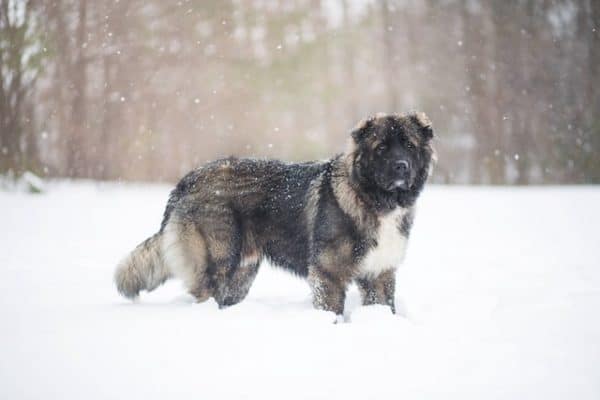
Caucasian Shepherd Vs German Shepherd: Personality and Temperament
There is no doubt that both the Caucasian Shepherd and the German Shepherd are a rather intimidating sight to behold. Of the two, the Caucasian Shepherd is undeniably bigger.
If you are considering adding a dog to your family as a form of protection, guarding, and companionship, you may be wondering whether the Caucasian Shepherd or the German Shepherd would be the better choice.
Here, there are also some important personality differences to be aware of.
Caucasian Shepherd personality and temperament
The Caucasian Shepherd is known to be loving and loyal to “their” people but can be stubborn and independent overall. This breed also tends to be naturally wary of strangers.
German Shepherd’s personality and temperament
The German Shepherd’s near-universal popularity speaks for itself when it comes to personality and temperament.
A well-trained GSD will be a delight to share life with.
Caucasian Shepherd Vs German Shepherd: Size, Height and Weight
While both the Caucasian Shepherd and the German Shepherd can be considered sizable dogs, the former easily qualifies for the giant breed category while the latter remains in the large dog category.
Caucasian Shepherd size, height, and weight
The Caucasian Shepherd weighs between 99 and 170+ pounds and stands 23 to 30 inches high (paw pads to shoulders).
It is not known whether there is a significant size, weight, or height difference between adult males and adult females for this dog breed.
German Shepherd size, height, and weight
The German Shepherd dog weighs between 50 and 90 pounds on average and stands between 22 and 26 inches tall (paw pads to shoulders).
Typically, a male adult German Shepherd dog will weigh 10 to 15 pounds more than adult females and stand two to four inches taller.
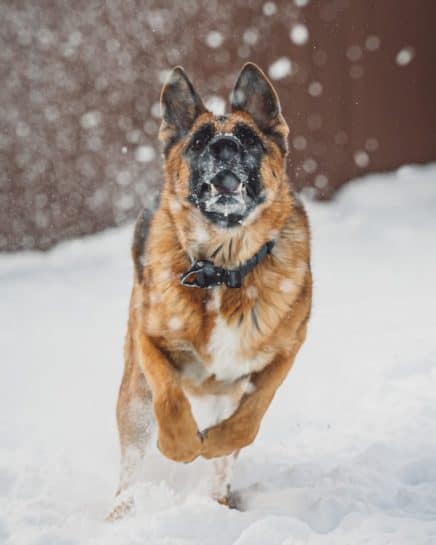
Caucasian Shepherd Vs German Shepherd: Exercise and Training Needs
When comparing the Caucasian Shepherd vs the German Shepherd, one area where these two purebred dog breeds are particularly alike is in their exercise and training needs.
Since both dog breeds are true working dog breeds and are bred to do a job, you will want to engage in activities to keep them productively occupied.
Both the Caucasian Shepherd and the German Shepherd have been bred to live and work alongside people.
They may look like big, strong outdoor dogs that can take care of themselves, but they crave human companionship and need to live indoors with their human family.
Caucasian Shepherd exercise and training needs
The Caucasian Shepherd, being a giant dog breed, has less of a need for constant exercise than does the German Shepherd.
However, this dog breed excels at endurance athletics. They are very single-minded and smart and are accustomed to working independently when herding and guarding.
This can mean the Caucasian Shepherd can be a handful for a beginning dog trainer. They can be obstinate and stubborn and quite independent.
As a very smart, strong dog breed, only positive reinforcement, and positive training methods should be used to train the Caucasian Shepherd.
German Shepherd exercise and training needs
The German Shepherd was bred to do similar work as the Caucasian Shepherd. But this dog breed has more of a natural people-centric, people-pleasing personality.
This typically makes the GSD take very well to training as long as positive methods are used.
German Shepherds are naturally very high-energy, active, athletic dogs that do not tolerate getting bored very well. A bored German Shepherd is a destructive dog!
German Shepherds love canine athletics like agility, search and rescue, and obedience. They make great service and therapy dogs.
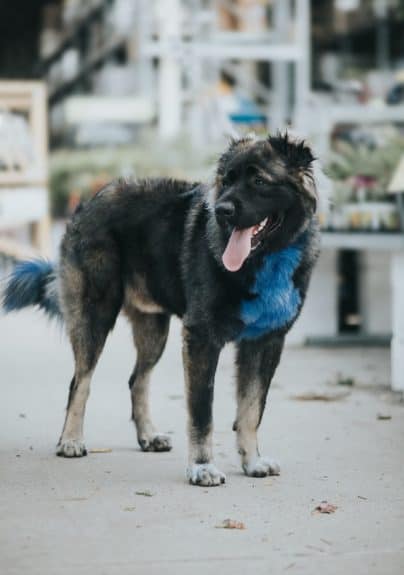
Caucasian Shepherd Vs German Shepherd: Shedding, Coat Care and Grooming Needs
One looks at the typical Caucasian Shepherd’s woolly coat and it is easy to think you are looking at a bear!
In comparison, the German Shepherd’s own thick, dense coat seems positively sleek.
But actually, both purebred dog breeds can be bred for a variety of coat types.
Caucasian Shepherd shedding, coat care, and grooming needs
While most people think all Caucasian Shepherd dogs have very thick, long, wild fur, Caucasian Shepherds can be bred to be both long-coated and short-coated.
Regardless of coat length, however, the Caucasian Shepherd will have a double-layer coat. The outer layer is water-resistant and coarse and the inner layer is downy-soft and very fine and thick.
Because the Caucasian Shepherd’s coat has been specifically developed to keep this dog warm, dry, and protected while doing hard work in very difficult weather, it sheds out year-round to keep the protective properties fully intact.
Twice per year at the changing of the seasons, the Caucasian Shepherd will go through what some CSD owners have nicknamed the “coat blow.”
A coat blow is when so much hair is falling it looks like a winter storm made up of dog hair!
This means you can count on a ton of brushing and sweeping year-round. During the coat blow times, you will want to keep a lint roller, dustpan and broom, and vacuum cleaner nearby.
Brushing daily can also help keep shed hair manageable.
German Shepherd shedding, coat care, and grooming needs
German Shepherds can be bred in two different coat types: medium and long hair. A GSD with a medium-length coat will have a thicker insulating undercoat than will a GSD with a long coat type.
Like the Caucasian Shepherd, the GSD coat is coarse and water-resistant on the outer layer and thick and warm underneath.
Because the coat has been developed to serve a similarly protective purpose as the German Shepherd is out and about in all kinds of weather doing their work, there will be lots of year-round shedding.
Also, the German Shepherd will go through the seasonal “coat blow” – often more heavily when winter is transitioning to spring. Regular brushing can help keep shed hair under control.
These dogs typically don’t need bathing very often unless they roll in something.
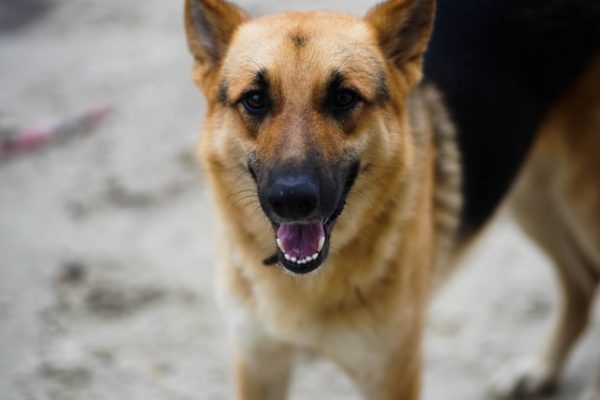
Caucasian Shepherd Vs German Shepherd: Longevity and Health Issues
In the majority of cases, larger and giant size dog breeds tend to have shorter life expectancies than do small to medium size dog breeds.
While not all known purebred dog breed health issues have been traced to genetic causes, responsible breeders continue working to prescreen parent dogs to produce the healthiest puppies.
The Orthopedic Foundation for Animals (OFA) maintains a central opt-in database called the Canine Health Information Center (CHIC).
Breeders can voluntarily submit information about the health of their breeding dogs to inform others.
This information is also available to prospective owners. It can help you know what to ask a breeder before making a lifetime commitment to one of their puppies.
Caucasian Shepherd longevity and health
Overall, the Caucasian Shepherd has a typical life expectancy of 10 to 12 years.
The Canine Health Information Center (CHIC) database states that the Caucasian Shepherd is known to have the following genetic (heritable) health issues:
- Hip dysplasia.
- Elbow dysplasia.
- Patellar luxation (trick knee cap).
- Cardiac issues.
- Eye issues.
- Degenerative myelopathy.
- Dentition (dental issues).
German Shepherd longevity and health
The German Shepherd dog has a typical life expectancy of 9 to 13 years.
The Canine Health Information Center (CHIC) database states that the German Shepherd is known to have the following genetic (heritable) health issues:
- Hip dysplasia.
- Elbow dysplasia.
- Autoimmune thyroiditis.
- Cardiac issues.
- Eye issues.
- Degenerative myelopathy.
- Temperament issues.
Caucasian Shepherd Vs German Shepherd: Which Dog Is Better With Kids?
Both dog breeds are known to be very gentle, loving, and loyal. Both can be very affectionate towards and protective of children.
However, because both dogs are so large, it can be smart to wait until your kids are a little bigger before bringing either dog into your family.
It is also vital to make sure your new dog is well trained before adding either dog to a family with young children or babies.
This is particularly true with the Caucasian Shepherd because of this dog breed’s independent personality and enormous size.
Neither the German Shepherd nor the Caucasian Shepherd is a good choice as a pet dog if you have any other vulnerable, prey-type pet species in your household.
Caucasian Shepherd Vs German Shepherd: Which Dog Will You Choose?
Do you have your eye on either the Caucasian Shepherd dog or the German Shepherd dog for your next companion canine?
Both dogs have a long and noble history of living and working alongside people with devotion, love, and loyalty.
Which dog breed is the right one for you – the Caucasian Shepherd or the German Shepherd? The choice is up to you!
Related Reading: 14 Differences Between German Shepherd Dogs and Great Danes






























